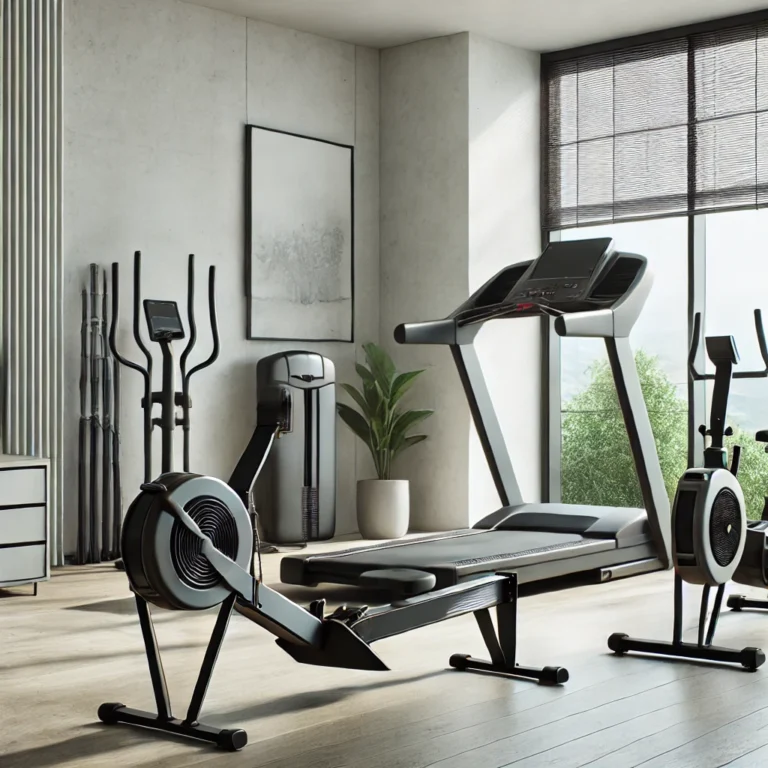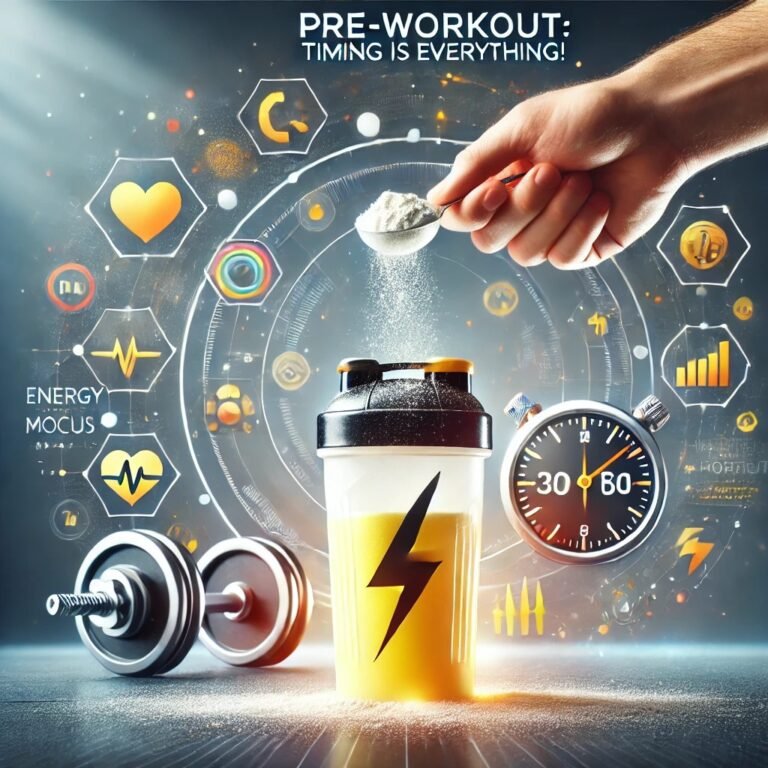If you’re searching for garage gym ideas, you’re likely looking for a way to transform your home into the ultimate fitness space. A garage gym is the perfect solution for those who value convenience, customization, and cost-effectiveness. By utilizing your garage, you can create a personal workout haven tailored to your fitness goals—all without the hassle of commuting to a gym.
One of the greatest advantages of a garage gym is its flexibility. You can choose the equipment that fits your workout style, design the layout to maximize space, and even add personal touches to keep you motivated. Plus, it’s a cost-effective investment in the long run. While the initial setup might require some budgeting, you’ll save on gym memberships and time spent traveling. A garage gym is perfect for all size garages if you have limited spaces check out out guide on Small Garage Gym Ideas here.
Whether you’re interested in weightlifting, cardio, or functional training, a garage gym can be customized to meet your needs. To learn more about the best equipment to include in your setup, check out our Guide to Home Gym Equipment for expert advice and inspiration.
Is a Garage Gym a Good Idea?
Absolutely! A garage gym is by far the best option for beginners. Allowing you to train in a stress free and judgement free environment helping you learn and grow in the way that suits you best. So, is a garage gym worth it? it all depends on your budget, dedication and commitment to your fitness goals.
There are pros and cons to creating a garage gym because of the potential high cost for equipment and training accessories, but overall its a great idea to create your own garage gym. With a lot of determination and preparation you can turn your empty space into a fitness paradise specifically designed to fit your fitness needs. The convenience and flexibility will overshadow all the cons you might face along the way. Here are some pros and cons below to help you make your mind up:
The Pros of a Garage Gym:
The Cons of a Garage Gym:
1.Convenience
- No need to commute to a gym—you can work out whenever you want, even at odd hours.
- Eliminates the hassle of sharing equipment or waiting your turn during peak hours.
2.Cost-Effectiveness
- While there’s an initial investment for equipment and setup, you’ll save money over time by avoiding recurring gym membership fees.
3.Customization
- Tailor your gym to fit your workout style, whether that’s weightlifting, cardio, or yoga.
- Choose equipment, decor, and layout that inspire and motivate you.
4.Privacy
- Enjoy the comfort of working out in your own space without distractions or self-consciousness.
5.Multi-Purpose Space
- Your garage gym can double as a space for other activities, like stretching, recovery, or even recreational fun.
1.Space Limitations
- A garage might not have enough room for larger equipment like a squat rack and cardio machines, especially if you need to store other items there.
- Creative planning is necessary to optimize the available space.
2.Climate Control
- Garages are often uninsulated, making them too hot in summer and too cold in winter.
- Solutions like portable heaters, fans, or installing insulation can help regulate temperature.
3.Ventilation
- Poor airflow can lead to discomfort and even equipment damage over time.
- Consider installing a fan, opening windows or doors, or investing in a ventilation system.
4.Upfront Costs
- While cost-effective in the long run, the initial investment in equipment, flooring, and climate adjustments can be significant.
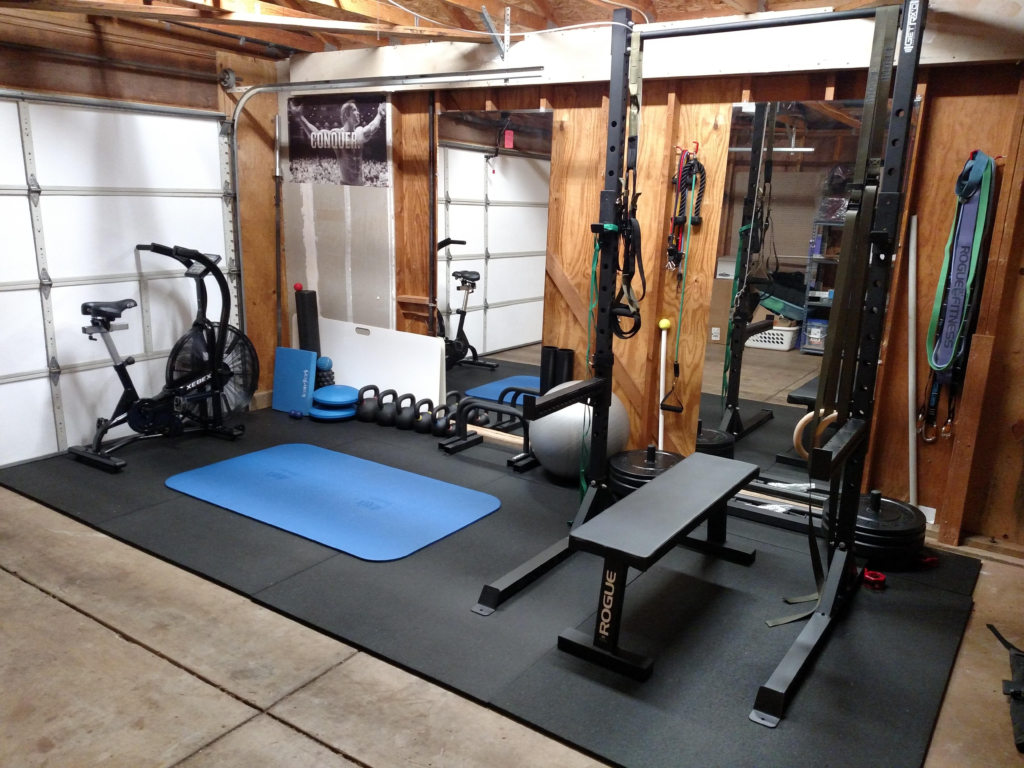
If your struggle for inspiration when customising and designing your home gym check out Garage Gym Small Design here
Is It Worth It?
A garage gym is an excellent idea if you value convenience, privacy, and the ability to personalize your workout space. While challenges like space and climate control exist, they can often be addressed with thoughtful planning and minor investments.
If you’re ready to take the plunge, check out our Guide to Home Gym Equipment for tips on selecting the best gear to maximize your setup. A garage gym might just be the perfect solution to achieving your fitness goals!
How to Make a Gym in a Garage
Turning your garage into a gym is a rewarding project that allows you to create a convenient and personalized workout space. Follow these step-by-step instructions to get started and make the most of your available space.
Step 1: Clear and Clean the Space
Declutter
- Remove all unnecessary items, such as old storage or unused tools, to maximize space.
- Donate, sell, or relocate items to free up the area for your gym setup.
Deep Clean
- Sweep and mop the floor to remove dust and debris.
- Address any signs of mold, leaks, or pests to ensure a clean and safe environment.
Step 2: Plan Your Layout
Measure the Space
- Take measurements of your garage to determine how much room you have for equipment and movement.
- Identify any obstructions like water heaters, shelves, or car storage that need to be considered.
Designate Zones
- Create specific areas for different types of workouts, such as:
- Strength training (weights, racks)
- Cardio (treadmill, bike)
- Flexibility and recovery (yoga mat, foam roller)
Sketch a Floor Plan
- Use graph paper or a digital tool to map out where equipment and storage will go.
- Consider leaving open space for bodyweight exercises and stretching.
Step 3: Optimize Limited Space
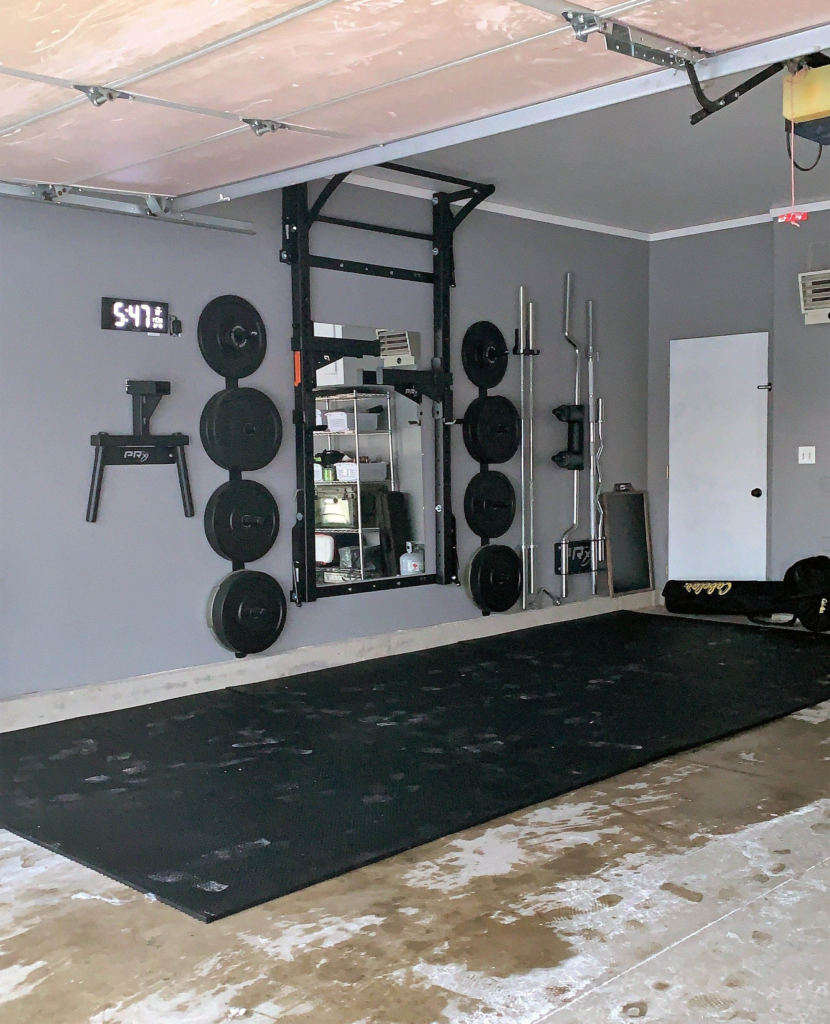
Use Vertical Storage
- Install wall-mounted racks or pegboards to store weights, resistance bands, and smaller equipment.
- Hang items like jump ropes, medicine balls, or even a foldable squat rack.
Invest in Multi-Functional Equipment
- Choose compact and versatile items, such as:
- Adjustable dumbbells or kettlebells
- A foldable bench
- Resistance bands that take up minimal space
Install Storage Solutions
- Overhead storage racks can keep seasonal or rarely used items out of the way.
- Use bins or shelves to organize smaller accessories.
Step 4: Upgrade the Environment
Flooring
- Install durable, non-slip flooring like rubber mats to protect your garage floor and reduce impact on your joints.
- Foam tiles are another budget-friendly option for smaller areas.
Lighting
- Replace dim garage lights with bright LEDs to create a well-lit workout area.
- Natural light is ideal, so consider adding blinds or sheer curtains for privacy if your garage has windows.
Climate Control
- Use portable fans or heaters to keep the temperature comfortable year-round.
- Insulating the garage walls and doors can help maintain a stable climate.
Step 5: Set Up the Equipment
Assemble Larger Items First
- Start with power racks, benches, or cardio machines to define your primary workout zone.
Organize Smaller Items
- Place dumbbells, kettlebells, and accessories in designated storage areas for easy access.
Test Your Layout
- Perform a mock workout to ensure everything feels comfortable and accessible. Adjust as needed.
With proper planning and smart organization, you can transform your garage into a fully functional gym that fits your workout goals and lifestyle. For ideas on the best equipment to include, check out our Guide to Home Gym Equipment for expert advice!
Essential Equipment for Your Garage Gym
Choosing the right equipment is the foundation of a successful garage gym. The best setup depends on your workout goals—whether you’re focused on strength training, cardio, or flexibility—and the available space. Here’s a breakdown of must-have items to help you get started, including space-saving and multi-functional options.
Strength Training Essentials
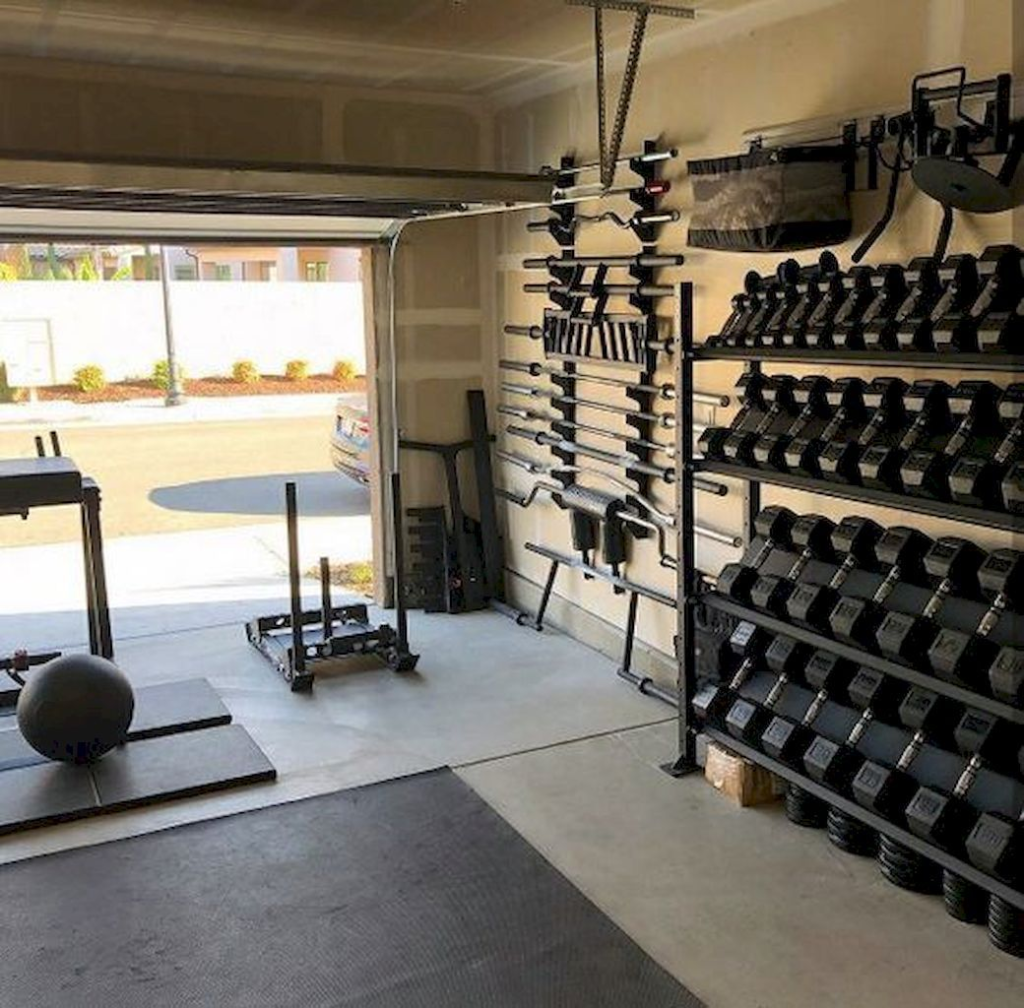
- Adjustable Dumbbells
- These are versatile and space-saving, offering a range of weights in one compact design.
- Perfect for exercises like bicep curls, lunges, and overhead presses.
- Barbell and Weight Plates
- Ideal for heavy lifting, including squats, deadlifts, and bench presses.
- Opt for bumper plates to protect your flooring and reduce noise.
- Squat or Power Rack
- A staple for any strength-focused gym, allowing for safe squats, pull-ups, and bench presses.
- Look for foldable or wall-mounted options to save space.
- Bench
- A flat or adjustable bench expands your exercise options, from chest presses to step-ups.
- Folding benches are excellent for smaller garages.
Training at home can be daunting as you haven’t got a trained member of staff to ask for help. Check out a few of our guides with dumbbells and barbells such as the best back exercises with dumbbells and barbells. Also check out our all in 1 guide about barbells, such as all the different types and best exercise you can do at home
Cardio Equipment
For more information on cardio machines best suited for your home gym, check out our guide here, and also check out our ultimate guide to cardio here.
- Treadmill or Stationary Bike
- Choose based on your preference for running or cycling.
- Look for compact or foldable models to save space.
- Rowing Machine
- A full-body cardio option that also strengthens your back, shoulders, and legs.
- Foldable or upright storage models are great for tight spaces.
- Jump Rope
- A budget-friendly and highly effective cardio tool that takes up almost no space.
- A jump rope/ skipping rope is the best cost effective form of cardio, for more information check out our guide here.
- Ellipticals
- A great and versatile form of cardio that heavily works your entire body.
- Can be available in a larger or a folding space saving option.
- For more information check out our guide here.
Flexibility and Recovery Tools
- Yoga Mat
- Essential for stretching, yoga, or floor exercises.
- Choose a thick mat for extra comfort.
- Foam Roller
- Helps with muscle recovery and increases flexibility.
- Compact and easy to store.
- Resistance Bands
- Perfect for stretching, mobility work, and adding resistance to bodyweight exercises.
- Easily stored in a drawer or wall rack.
Multi-Functional Equipment

- Kettlebells
- Useful for strength, cardio, and functional training.
- Compact and versatile for exercises like swings, cleans, and Turkish get-ups.
- Suspension Trainer (e.g., TRX)
- Anchors to your garage wall or ceiling for full-body resistance training.
- Requires minimal storage space.
- Compact Cable Machine
- Combines the functionality of multiple machines in a single unit.
- Ideal for small garages looking to offer varied workout options.
Space-Saving Tips
- Wall Storage Systems: Use hooks, shelves, or pegboards to organize items like resistance bands, jump ropes, and mats.
- Folding Equipment: Invest in foldable benches, squat racks, and treadmills to free up space when not in use.
- Vertical Storage: Stack weight plates or use a rack to keep them organized and off the floor.
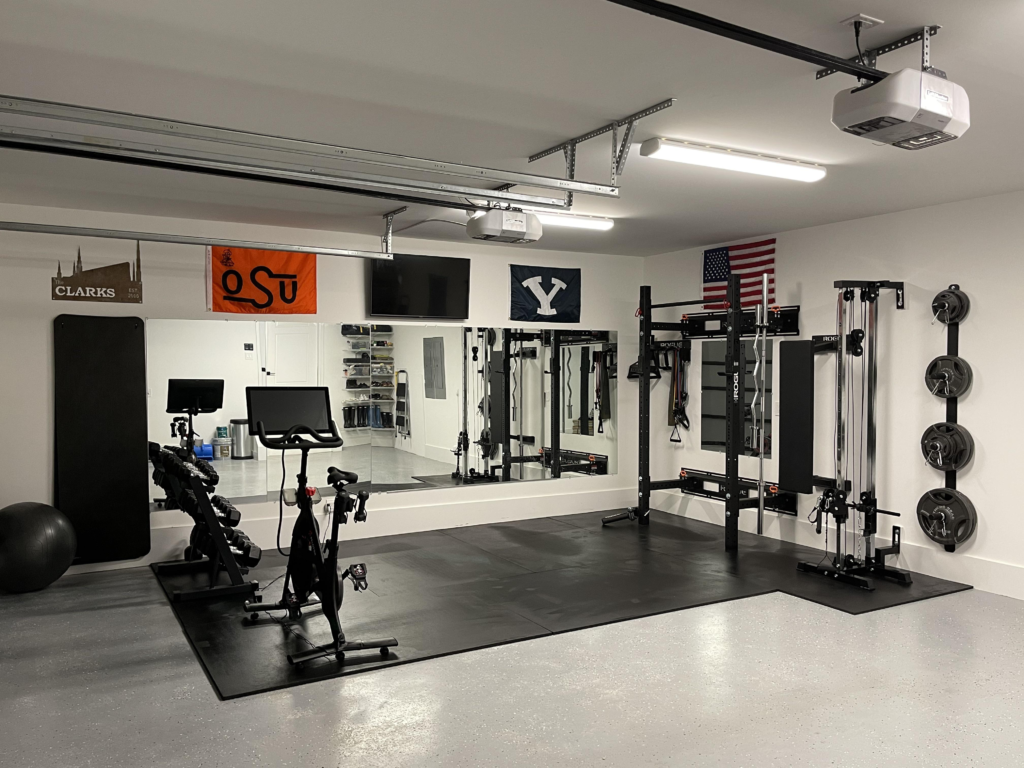
How to Personalize Your Garage Gym
Creating a garage gym isn’t just about the equipment; it’s also about designing a space that motivates and inspires you to stay consistent with your workouts. By adding personal touches, you can transform your gym into a comfortable and energizing environment that reflects your style and fitness goals. Here’s how to personalize your garage gym:
1. Add Mirrors for Functionality and Space
- Why Use Mirrors?
Mirrors are a great addition to any gym. They help you monitor your form during exercises, preventing injuries and maximizing effectiveness.- Large mirrors can also make a small garage feel more spacious and open.
- Placement Tips:
- Install mirrors on a prominent wall, ideally near your workout area for easy visibility.
- Use adhesive or frame-mounted mirrors for a sleek, professional look.
2. Upgrade the Lighting
Bright and Inviting:
- Proper lighting is essential to create a well-lit and energizing atmosphere. Replace dim garage bulbs with bright, energy-efficient LEDs.
- Natural light is ideal, so if your garage has windows, keep them uncovered or use sheer curtains to maintain privacy while maximizing daylight.

Customizable Options:
- Install dimmable lights to adjust the brightness based on the mood or time of day.
- Add colour-changing LED strips for a dynamic and fun workout ambiance.
3. Use Wall Decor for Inspiration
- Motivational Posters:
Hang posters with quotes or images that inspire you to push harder and stay focused on your goals.- Examples: “No Pain, No Gain” or “Be Stronger Than Your Excuses.”
- Adding motivational quotes can improve your mindset and workout, here’s 75 motivational gym quotes to add around your gym.
- Fitness-Themed Artwork:
Include prints or decals related to your favorite sports, athletes, or workout styles for a personal touch.
4. Organize with Style
- Storage Solutions:
Use decorative shelves, hooks, and bins to keep your gym tidy and visually appealing.- Wall-mounted racks for dumbbells, kettlebells, or plates can double as functional and aesthetic features.
- Color Coordination:
Match your equipment, mats, and decor in cohesive color schemes to create a polished look.
5. Create a Motivating Sound Environment
- Sound System:
Install a Bluetooth speaker or soundbar for high-quality audio that keeps you pumped up during workouts.- Position the speakers strategically to evenly distribute sound throughout the gym.
- Playlist Ready:
Curate workout playlists with high-energy tracks to keep your motivation levels high.
6. Add Comfort Features
- Climate Control:
Install fans, portable heaters, or even a mini air conditioning unit to maintain a comfortable temperature year-round.- Insulation for the walls and doors can also help with temperature regulation.
- Personal Comfort Zone:
Include a small fridge for water bottles, protein shakes, or post-workout snacks.- A cozy corner with a chair or bench for rest and recovery can add a personal touch.
By incorporating these aesthetic and functional upgrades, your garage gym will feel less like a garage and more like a professional, personalized fitness studio. The small details matter, and with a bit of effort, you can create a space that not only serves your fitness needs but also inspires you to achieve your goals every day!
How Much Does It Cost to Convert a Garage Into a Gym?
A garage gym can be completed with equipment and furniture for around £1500- £3000 depending on how gear you want and the quality. Its great news if you are on a budget as you can start with more basic equipment as level up and upgrade it as you progress and have some extra money. Below we have listed 3 different budgets you can use to guide yourself to getting your perfect home gym.
Budget Setup (£500–£1,500)
For those looking to start small or keep costs minimal, a budget-friendly garage gym can still be highly functional.
- Flooring (£100–£300)
- Basic rubber mats or foam tiles to protect your floor and reduce noise.
- Cost depends on the size of your garage.
- Essential Equipment (£300–£900)
- Adjustable dumbbells (£100–£300)
- Resistance bands (£20–£50)
- A basic weight bench (£50–£100)
- Jump rope and yoga mat (£20–£40)
- Additional Costs
- Basic storage solutions like wall hooks or shelves (£50–£150).
- Portable fan or heater for temperature control (£30–£100).
Who It’s For: Beginners or those focusing on bodyweight exercises and minimal equipment.
Mid-Range Setup (£2,000–£5,000)
A mid-range setup balances quality equipment with a few upgrades to make the space more comfortable and efficient.
- Flooring (£300–£600)
- Higher-quality rubber flooring or interlocking tiles for durability and shock absorption.
- Equipment (£1,200–£3,500)
- Power rack or squat rack (£300–£1,000)
- Olympic barbell with weight plates (£300–£600)
- Adjustable bench (£200–£400)
- Cardio equipment like a rowing machine or stationary bike (£500–£1,200)
- Renovations and Decor (£500–£900)
- Painting the walls (£100–£300).
- Installing mirrors for functionality and aesthetics (£200–£500).
- Improved lighting (e.g., LED panels) (£100–£200).
Who It’s For: Intermediate-level users or those wanting a more versatile workout space.
High-End Setup (£6,000–£15,000+)
For those looking to create a luxury gym experience, a high-end setup offers premium equipment and comprehensive renovations.
- Flooring (£500–£1,000)
- Commercial-grade gym flooring for maximum durability and noise reduction.
- Equipment (£3,000–£10,000)
- Full power rack with attachments (£1,000–£2,000)
- Top-tier cardio machines like a treadmill, spin bike, or elliptical (£1,500–£3,000 each)
- Dumbbells, kettlebells, and specialty equipment like a cable machine (£1,000–£3,000)
- Renovations and Additions (£2,000–£5,000+)
- Insulation and climate control, such as portable air conditioning or heaters (£1,000–£2,000).
- Built-in sound system (£500–£1,000).
- Custom wall decor, lighting systems, and advanced storage solutions (£500–£1,000).
Who It’s For: Fitness enthusiasts or families wanting a professional, gym-quality setup.
Factors to Consider
- Space Size: Larger garages will require more flooring and possibly more equipment, increasing costs.
- Usage Goals: Focus on the equipment that aligns with your fitness goals to avoid overspending on unnecessary items.
- DIY vs Professional Renovations: DIY efforts can save money, but hiring professionals for insulation, lighting, or flooring may be necessary for a polished result.
Key Tip: Start with the essentials and expand your gym as your budget allows. For more guidance on selecting the right equipment, visit our Guide to Home Gym Equipment and make your garage gym dream a reality!
Small Garage Gym Ideas
Creating a functional and inspiring gym in a small garage is entirely possible with the right strategies. By using smart space-saving techniques and selecting compact equipment, you can maximize your limited space while still achieving your fitness goals. Here are some tips and examples to help you design the perfect small garage gym.
If your struggling for inspiration check out r/homegym to help find and talk to others about equipment and layouts that could benefit you here.
1. Use Foldable Equipment
- Folding Squat Racks:
- These racks can be mounted to the wall and folded flat when not in use, saving valuable floor space.
- Example: A foldable wall-mounted squat rack paired with a collapsible bench.
- Adjustable Benches:
- Choose a bench that folds or collapses for easy storage.
- Look for multi-functional benches that allow for flat, incline, and decline positions.
- Treadmills and Bikes:
- Compact or foldable versions of cardio machines can easily be stowed away.
- Consider under-desk treadmills or upright folding bikes for ultra-small spaces.
2. Install Wall Storage
- Pegboards:
- Mount a pegboard to hold smaller items like resistance bands, jump ropes, and kettlebells.
- Add hooks and baskets to keep everything organized and off the floor.
- Wall-Mounted Shelves and Racks:
- Use shelves to store dumbbells, mats, or other lightweight gear.
- A vertical barbell holder is perfect for keeping your barbell secure and out of the way.
- Ceiling Storage:
- Utilize overhead racks for seasonal items or gear you don’t use daily, leaving more room below for your workouts.
3. Focus on Multi-Functional Equipment

- Adjustable Dumbbells:
- Replace an entire rack of dumbbells with a single adjustable set.
- These provide a wide range of weight options while taking up minimal space.
- Resistance Bands:
- Compact, lightweight, and versatile, resistance bands can replace larger machines for many strength and flexibility exercises.
- Suspension Trainers (e.g., TRX):
- Attach a suspension trainer to a sturdy wall or ceiling for a full-body workout without taking up floor space.
4. Plan Your Layout Strategically
- Designate Zones:
- Divide your garage into zones, even in small spaces. For example:
- Strength training (squat rack or bench)
- Cardio (treadmill or bike)
- Recovery (yoga mat or foam roller)
- Divide your garage into zones, even in small spaces. For example:
- Leave Open Space:
- Ensure there’s a clear area for bodyweight exercises or dynamic movements like burpees or lunges.
For additional help to plan your layout check out north east garage conversions to get your garage gym layout created here.
5. Maximize Aesthetics and Comfort
- Mirrors:
- Add a large mirror to one wall to create the illusion of a bigger space and help monitor form.
- Mirrors also reflect light, making the area feel brighter and more inviting.
- Lighting:
- Use bright LED lighting or install strip lights to make the space feel more open and energized.
- Personal Touches:
- Add motivational posters, compact speakers for music, or even a small plant to make the gym feel welcoming.
Example Compact Garage Gym Setups
- Minimalist Setup for Beginners
- Adjustable dumbbells, resistance bands, a foldable bench, and a yoga mat.
- All equipment can be neatly stored in a corner or on wall-mounted hooks.
- Strength-Focused Setup
- A folding squat rack, a barbell with plates, and adjustable dumbbells.
- Include a wall-mounted storage rack for weights and a foam mat to protect the floor.
- Cardio and Functional Training Setup
- A folding treadmill or upright bike, a suspension trainer, and a set of kettlebells.
- Use pegboards and ceiling racks to keep smaller items organized.
FAQ: Garage Gym Ideas
Here are answers to some of the most common questions people ask about setting up and maintaining a garage gym. These tips will help you make informed decisions and get the most out of your fitness space.
1. Do you need to insulate a garage for a gym?
Not insulating your gym may be nice during hot weathers but during the cold you will need add some heaters which will increase your electricity bill by a substantial amount. Here are some tips to help you get started on insulating your gym.
- Steps for insulation:
- Add foam board or spray foam insulation to the walls.
- Insulate the garage door with a pre-cut insulation kit or reflective foil.
- Seal gaps around windows and doors with weather stripping or caulking.
- For maximum comfort, consider adding a portable heater or air conditioning unit for more extreme temperatures.
2. What flooring is best for a garage gym?
- Rubber Flooring: Durable, shock-absorbing, and easy to clean—ideal for weightlifting and heavy equipment.
- Foam Tiles: Lightweight and affordable, great for yoga or bodyweight exercises but less durable for heavy equipment.
- Horse Stall Mats: A cost-effective, heavy-duty option for protecting your floor from weights.
- Consider the type of exercise you’ll be doing to choose the right material for your needs.
3. Can I use my garage gym year-round?
- Yes, but it requires preparation to handle extreme temperatures.
- For Winter: Insulate the walls and garage door, use space heaters, and wear warm workout gear.
- For Summer: Install fans or portable air conditioning and keep windows or doors open for ventilation.
- Climate control options like a mini-split system can also keep your garage gym comfortable year-round.
4. How much space do I need for a garage gym?
- The amount of space depends on your goals and equipment needs.
- Small Space (Single-Car Garage): Ideal for compact equipment like adjustable dumbbells, resistance bands, and foldable benches.
- Medium Space (Two-Car Garage): Can accommodate a power rack, barbell, weight plates, and a cardio machine.
- Prioritize multi-functional equipment and smart storage solutions to maximize any size.
5. What are the best ways to store gym equipment in a small garage?
- Wall Storage: Use wall-mounted racks or pegboards to hold weights, kettlebells, and resistance bands.
- Overhead Storage: Install ceiling racks for seasonal or rarely used items to free up floor space.
- Compact Racks: A vertical barbell holder or a dumbbell rack keeps everything organized and off the ground.
6. Do I need ventilation in my garage gym?
- Proper ventilation is essential to maintain air quality and comfort.
- Open the garage door or windows during workouts for fresh air.
- Install a fan or ventilation system to improve airflow, especially during intense exercise.
- Consider adding a dehumidifier if moisture buildup is a concern.
7. Can I build a garage gym on a budget?
- Absolutely! Here are a few tips for a budget-friendly setup:
- Start with essentials like resistance bands, a jump rope, and adjustable dumbbells.
- Buy used equipment from local marketplaces or gym closing sales.
- DIY flooring with cost-effective options like horse stall mats.
- Gradually add equipment as your budget allows.
8. How do I keep my garage gym clean and organized?
- Sweep or vacuum regularly to keep dust and dirt at bay.
- Wipe down equipment after each workout to prevent sweat buildup.
- Use bins, wall-mounted storage, or shelves to keep small items like bands and accessories tidy.
Conclusion
A garage gym is more than just a workout space—it’s a convenient, cost-effective, and customizable solution to achieving your fitness goals. Whether you’re working with a small single-car garage or a spacious two-car setup, the possibilities are endless with smart planning and the right equipment. From foldable racks to compact cardio machines, you can design a gym that fits your lifestyle and space.
We’ve explored the benefits of a garage gym, essential equipment to consider, tips for optimizing small spaces, and even strategies for year-round comfort. Now it’s your turn to bring these ideas to life! Start by clearing out your garage, planning your layout, and investing in equipment that aligns with your fitness goals.
Ready to dive deeper? Explore our Guide to Home Gym Equipment for expert advice on selecting the best gear for your setup. Your dream garage gym is just a few steps away—start building it today and take the first step toward a healthier, more convenient lifestyle!
